Editorial: General Motors Zombie Watch 14: 2012 Lineup
General Motors has always been long on talk about the future. The company that invented concept cars and pioneered planned obsolescence has always kept consumers focused on the next big thing(s), and that tradition is ever more important now that GM is a publicly-owned entity. Future products are the justification for current investments and subsidies, and GM knows it. Though details are sparse and largely sifted out of the murk of PR leaks, teases and hearsay, a picture of post-IPO GM’s 2012 lineup is beginning to form. The success of these vehicles depends on a number of difficult-to-predict factors, but assuming fairly conservative projections (steady increases in US economic growth, auto sales and gas prices), it’s not too hard to tease out a few early conclusions on GM’s strategy. So let’s hop in the time machine and set the dial for the Fall of 2011.
City/Mini Class
The Chevrolet Spark will be all-new for the 2012 model year, hitting dealerships just as our time machine arrives two years into the future. Based on the basic-by-third-world-standards Daewoo Matiz, the Spark is Geo Metro redux with a Chevy badge and styling. With a 1.2 liter engine and a goal of 50 mpg on the highway, Spark is clearly GM’s insurance policy against another sharp spike in fuel prices. US production of about 25k-30k units annually (about current Aveo sales levels) is reportedly planned. Most of GM’s competitors plan on bringing more premium offerings to this segment (e.g. VW Up!, Toyota iQ), making Spark a potentially unique value (though probably less profitable).
Subcompact Class
GM will replace its unloved Aveo as a 2011 model, a year before our time machine lands. Chinese/Korean engineered on the new GM-Daewoo “Gamma II” platform and styled by GM’s Brazilian studio, the new Aveo is supposed to be built at Orion Township. Strangely though, Automotive News [sub] reports that Aveo will “likely” be produced at San Luis Potosi, Mexico. Styling and space should be improved compared to the outgoing model, but the model will probably struggle under the Aveo name thanks to its predecessor’s weak reputation. Name continuity is a good thing, but Bob Lutz’s apparent decision to keep the Aveo name may not have been the example for GM to start the habit with.
Both the Spark and Aveo will struggle to hide their developing-market roots and will likely do little to change the perception small cars are an afterthought for GM. The Spark in particular should face some trouble, given that most economists see economic recovery and rising gas prices arriving hand-in-hand. In that scenario (and considering GM’s desperate need to improve its small-car rep), Toyota and VW’s premium city car approach seems to be the better choice. And with the Aveo upsizing to near-Cobalt size, GM will also be selling it as a hatchback only for fear of cannibalizing the Cruze. This will further limit its appeal in the American market.
Compact Class
The Cruze will debut alongside the new Aveo in 2011, and will be built on the global Delta II platform in Lordstown, OH. Early reviews from Europe and Australia where local versions have already debuted are . . . mixed. Reviewers praise the space, styling and interior quality, while criticizing the car’s weight, engines and dull handling. All in all, though, it’s hard to conclude that the Cruze won’t be a huge improvement on the Cobalt. This should go a long way towards building some kind of reputation for GM in a segment where it has never really been competitive. Unfortunately, for every positive step there’s at least one regression.
A Delta II-based Buick is planned for model year 2012, which has been conceived as a way of returning lost Pontiac volume to the Buick-GMC dealer network. “Unique sheetmetal” is promised, but the model (like all Buicks going forward) will essentially be a tweaked Chinese-market offering built alongside the Cruze at Lordstown. GM’s level of cynicism in executing this model will be a defining choice. With the Cruze already offering a relatively high quality interior for the segment, differentiating the Buick compact will be tough. Especially if Buick-GMC dealers are counting on it for real volume.
In addition to badge-engineering, GM is also saddling its compact portfolio with its other age-old sin, the fleet special. Though the weary Cobalt will no longer be offered at retail when our time machine lands, GM is considering a fleet-only version of the Cobalt to soldier through 2010 and possibly into 2011. Though fleet specials are understood to have a negative effect on brand image, old habits die hard. And as we will see later, the Cobalt “Fleet” won’t be the only image-dragging holdover model in GM’s portfolio come 2011.
EREV
The Volt should be available at dealers when we arrive to witness GM’s 2012 lineup. 10,000 units of production are planned for 2012, with an MSRP of $43K and GM will lose money on every one. A Cadillac Converj version could be available by 2012, but the chances are not good. If it is available by 2012, expect either a rebadge of shocking cynicism or a super-limited halo car. Neither of which will help GM. As reality sinks in and hype fades, the Volt could well be the cause of a few GM PR headaches by 2012.
Compact MPV/CUV
Entering the magical world of crossover utility vehicles, GM’s 2012 product planning begins to show signs of yet another classic GM sin: overlap. Chevrolet’s Delta II-based Orlando looks to be a relatively solid contender as a cheap seven-seater in the Kia Rondo mold. But will those two extra seats be useful enough to tempt Americans away from GM’s slew of five-passenger vehicles? Given the limitations of the platform, the answer is probably no. Unless, of course, a gas price shock creates more interest in the micro-van segment.
A Gamma-II based five-seat CUV is planned for Buick, in yet another attempt to bring more volume into the Buick-GMC sales channel. As with the Buick Cruze rebadge, this weak motivation could easily tempt GM into the old cynical rebadge trap. Though GM-Shanghai’s Business concept shows the possibility of an attractive small Buick CUV, putting concept into practice could prove difficult. The challenge: attracting a premium over the upsized, five-door Aveo, without cutting into GM’s four Theta CUVs. Or a possible 2012 GMC “Sub-Terrain” CUV based on either the Gamma II or Delta II platform.
Given GM’s history and limited resources, expect the Buick CUV to be tough to distinguish from the Aveo and the GMC to be similar to the Orlando. Execution is everything with this much potential for overlap, and GM has only so much time to create meaningful differentiation in this cluster-NSFW. And as we move into the meat of GM’s planned lineup, that problem appears everywhere. No way can GM make sense of all of it.
Midsize CUV
Here in 2009 this is one of the hottest segments in the market, as Americans downsize from Detroit SUVs into CRVs, Rav4s and Foresters. And GM is only a little bit late to the party, banking on the 2010 Equinox and Terrain to fight for the remainder of the cute-ute boom. But GM is already having difficulty explaining how consumers should choose between these offerings. For 2011, Buick will add to the confusion by offering what appears to be an only mildly rebadged version of the Saturn Vue, which will bridge the already-narrow gap to the “Theta Premium” Cadillac SRX. Further complicating the Theta competition will be the Saturn Vue and the Saab 9-4X, which will likely both be sold by the former GM divisions in 2011.
The problem with GM’s Compact CUV offerings isn’t that GM misunderstands the market; this segment should continue to sell well through 2012. The problem is that GM is set on flooding the segment with models that, while distinguishable to buffs and designers, will only serve to confuse consumers. The Buick Vue rebadge seems to be a particularly senseless and cynical decision, justified only by the 2012 option of a plug-in drivetrain that should really be an option on the SRX. Retaining the Equinox name could also keep one of GM’s most important products in the shadow of its (ironically) forgettable predecessor, while the Terrain will share lot space with the Buick Vue. For such a crucial segment, GM has some major (and sadly familiar) issues to sort out. Fast.
Fullsize CUV
Though one of its more-recent platforms, the Lambda is already one of GM’s most egregious examples of latter-day brand engineering. Pre-bankruptcy, GM had four poorly-differentiated versions of the platform. In 2011, GM will likely have four poorly-differentiated versions of the platform. Traverse will be soldier on unchanged, while the Buick Enclave and GMC Acadia are scheduled for a 2012 refresh. Though the Saturn Outlook will probably still be on sale at Penske’s Saturn dealers (just to keep things fun), the fourth GM model is likely a 2012 Cadillac Escalade replacement. Though there’s talk of stretching the platform for ‘sclade duty, don’t expect it. GM will either do a quick-and-dirty Lambdasclade or allow the old GMT 900 beast to live on (truck/SUV strategy, as we will see later, is in chaos).
Either way, the Lambda glut caps a potential eleven-model swath of CUVs in GM’s lineup, not counting the five-door Aveo or the CTS Wagon. Four-brand GM dealer lots will be a maze of the rounded-off wagon-utes, with salesfolks guiding bewildered shoppers through a seemingly infinite palette of family vehicles. The CUV segment is a melting-pot of automotive styles anyway, where lines are already blur into unfamiliar form (and bland looks). And despite the huge number of models, nowhere in this mix is a credible compact off-roader or a modern family/commercial van (ala Ford’s Transit Connect). In model year 2012, it seems, variety in the heart of GM’s lineup will still only be skin-deep.
Midsize Sedans
Chevy’s “perception-shifting” 2008 Malibu will not be updated until after the 2012 model year, and for 2013 it will actually be downsized (except for the trunk). Which is hard to understand, considering that the aging Impala has hung close to the ‘bu in sales, seemingly on the strength of its interior size alone. But that’s a concern for 2013; for the purposes of our time-traveling, the Malibu will remain unchanged. But will its sales still be consistent?
By Fall 2011, the Opel Insignia-based Buick Regal will have been on sale for about a year. By then it should be fairly clear if the new model drives the kind of volume that Buick dealers need to make up for the loss of Pontiac. GM expects the four-cylinder-only Regal to cost “a few thousand dollars” less than its platform-mate, the LaCrosse, and become Buick’s best-selling model. Though the Insignia has been well-received in Europe, it shows less promise for the US market. It will have to be positioned as “more sporty” than the LaCrosse while only offering a four-banger to avoid overlap. Stuffing the Regal between LaCrosse and Impala/Malibu means limiting options, a compromise that hurts its chances as a volume model. And it may be the motivating factor in the ill-advised 2013 Malibu downsize.
Fullsize/Premium Sedans
GM’s decision to allow the W-body 2006 Impala to soldier on until 2014 is perhaps one of GM’s greatest sins. Though the Impala currently sells at about the same levels as the Malibu, one can’t help but feel that by 2012 the Impala will be bought only by curious students of 20th century automotive technology. It seems that GM has almost completely given up on large FWD sedans as a competitive volume product, perhaps assuming that the segment will be abandoned for the CUVs that it has bet the farm on. This assumption is by no means a sure thing. Meanwhile, the Impala will be an inescapable reminder of the old, bad GM.
Worse still, anyone who wants a remotely competitive fullsize GM sedan will have to look at one of its luxury brands. Specifically, they will have to look at Buick or Cadillac’s flagships, the LaCrosse or the XTS. The 2010 LaCrosse is seven inches longer than its Regal stablemate will be, and offers V6 and AWD options. Does that make the LaCrosse a “flagship” as GM claims, or does it make the Regal a hamstrung, would-be cannibal?
Cadillac’s “flagship” similarly fails to generate any unique appeal. Though Cadillac is supposed to fight BMW as a high-tech, dynamically-driven line of vehicles, the XTS will be a bloated “Super Epsilon,” possibly with standard AWD. This compromise (born of the inability to develop a true Cadillac flagship) places pressure on the entire GM sedan range by dint of its placement so close to the LaCrosse (itself to close to the Regal, Impala and Malibu). Somewhat larger than the CTS, there’s little chance it will better embody the brand’s world-class dynamic ambitions. That would be the job of the Alpha-platformed ATS sedan, a long-rumored BMW 3 Series fighter. Which will be expensive to develop, and difficult to justify considering the CTS is due to be downsized for 2013 or 2014.
Trucks And SUVs
Once GM’s bread-and-butter, truck and SUV development is in chaos as GM grapples with upcoming CAFE standards, the fear of gas price shocks and a buying public that appears to be “over” the body-on-frame craze. Expect Tahoe, Yukon, Suburban and Yukon XL to soldier on until at least 2013, unless GM rushes out more Lambda clones in the meantime.
Long term, the only apparent plan is to remake the Avalanche in the mold of the Ridgeline, also on the Lambda platform (Acadia SUT anyone?). Silverado and Sierra are in a holding pattern until at least 2013. Colorado and Canyon will be discontinued in 2012, possibly to be replaced by a global small pickup developed by GM of Brazil. The fact that GM is seriously considering abandoning the compact pickup market speaks volumes about GM’s jaundiced view of the future of body-on-frame.
Conclusion
By 2012, GM’s offerings will have become more narrow in positioning, with the exception of the Spark at the low end and the Volt at the high end. Between the upsized five-door Aveo and the premium brand “flagships,” GM’s products will be more tightly positioned than they have been in years. Overlap and brand dilution are likely to be the result, as many of the planned models serve only to make up for lost Pontiac volume at Buick-GMC dealers. Ironically, this flood of Buick product is both starving and cannibalizing Cadillac, which no longer has the resources to properly differentiate itself from Buick (in terms of aspiration, if not dynamics and styling).
Reviving Buick also means that one of GM’s least competitive products, the Impala, will stick around long past its best-by date. This will be corrosive to the Chevrolet brand, which won’t be able to compete with Ford’s Taurus without threatening the Buick/Cadillac balancing act. How many Epsilons can you fit on the head of a pin anyway? And if the Impala is going to slouch towards ignominy, why not a post-Cruze fleet special Cobalt too? Or maybe squeezing a few more bucks out of the HHR wouldn’t hurt too much?
One bad habit leads inexorably to others, especially for institutions so steeped in bad habit-as-tradition. GM’s executive never miss an opportunity to insist that change is here, telling us that they’re not fans of rebadging, and that every product must be class-leading. But the tight positioning, slumming holdovers and acknowledged volume-chasing to support dealers for model year 2012 show that these executive statements are either misleading or just crazy. Unless we are about to see one of the greatest achievements in the history of product differentiation, GM’s bright dawn will remain just out of reach. Same as it ever was.
More by Edward Niedermeyer
Latest Car Reviews
Read moreLatest Product Reviews
Read moreRecent Comments
- Lou_BC Let me see. Humans are fallible. They can be very greedy. Politicians sell to the highest bidder. What could go wrong?
- SPPPP Vibrant color 9 times out of 10 for me. There may be a few shapes that look just right in metallic gray, for example. There are a few nices ones out there. And I like VW "White Silver". But I'd usually prefer a deep red or a vibrant metallic green. Or a bright blue.
- 28-Cars-Later Say it ain't so, so reboot #6* isn't going to change anything?[list=1][*]V4-6-8 and High "Tech" 4100.[/*][*]Front wheel drive sooooo modern.[/*][*]NOrthSTARt.[/*][*]Catera wooooo.[/*][*]ATS all the things.[/*][*]We're *are* your daddy's Tesla. [/*][/list=1]
- MaintenanceCosts Can I have the hybrid powertrains and packaging of the RAV4 Hybrid or Prime with the interior materials, design, and build quality of the Mazda?
- ToolGuy I have 2 podcasts to listen to before commenting, stop rushing my homework.



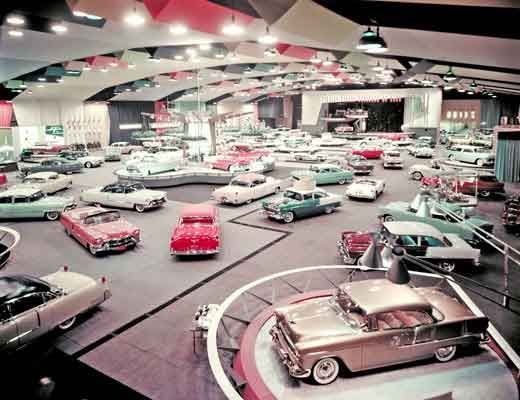












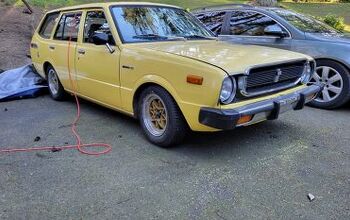
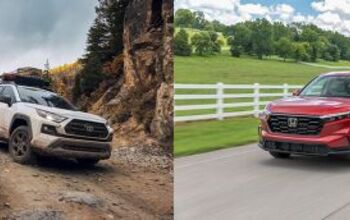
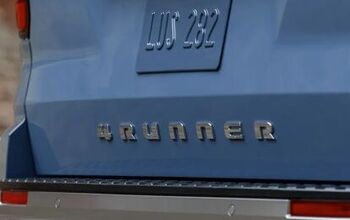



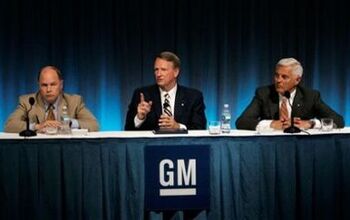

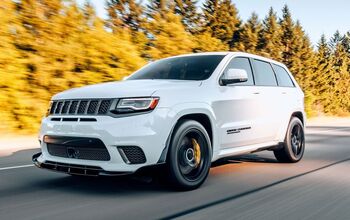
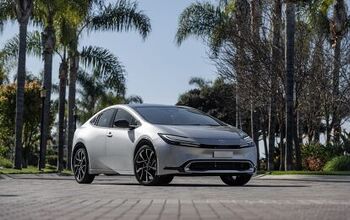
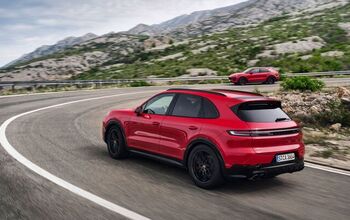

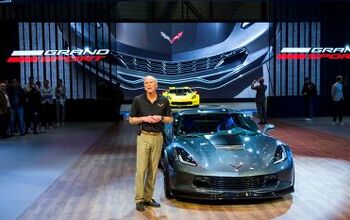
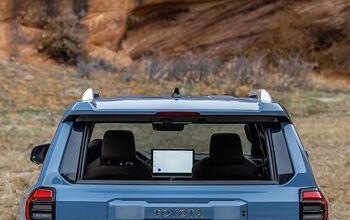


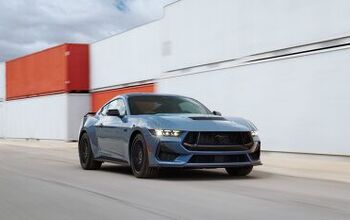

Comments
Join the conversation
Without seeing the Spark, and what will be on sale in the US, I don't suppose you can really say how premium the offering will be. That includes the VW offering and Toyota as well. From what I have seen, it will be a very nice product. The opinion of "hiding their developing-market roots" is opinion as you have seen neither the Aveo or Spark. For the Cruze, you are assuming that they won't change the engines, which should be changed. Weight is a real problem. But handling in this class is laughable for most. If GM wants to make an SS version of it, I am sure it will be fine. For the Buick Delta II car, it will be Astra based. It won't look anything like the Cruze and have a very nice interior, better than the Cruze. For the Volt, the MSRP hasn't been announced. For the Converj, there should be plenty of time to get new sheet metal and interior. Making the Volt, won't make money at first, but the knowledge is what GM needs. Later versions will be more profitable as the Voltec technology goes to other vehicles. For the Orlando, which is a global vehicle, it won't sell great in the US, but that isn't the point. It will sell elsewhere and sell ok in the US. In other places, this sells well, and don't forget that the Mazda also sells a minivan in the segment. The Gamma II Buick won't have any problems in positioning and pricing. Remember, they sell the Enclave and Acadia on the same lots, and sell quite a bit of them. It will be a more premium vehicle than the Terrain. Buick isn't getting a Saturn Vue rebadge. I don't believe it is getting any Theta variant at all. They killed this a few months ago. The Lambdas are differentiated in price and content. They are good vehicles for people looking to downsize from the Tahoes of the world. They are quite good in fact. I don't believe the Saturn version should have ever been made, and sales agree with that. A Caddy version isn't a sin. For the count, Chevy has 2, (Traverse and Equinox), Buick has 2 (Encore and Enclave), GMC has 2 (Terrain and Acadia), Caddy has 2 (SRX and possibly new Escalade). And noone cares about offroading in a CUV. That was the point of making CUV's. For the Malibu, it may not actually get downsized. It might not be on the SWB EPII platform like the Regal, but on the LWB of the LaCrosse and the Impala on the Super LWB like the Caddy XTS. That hasn't been confirmed either way to my knowledge. The Regal will get either a V6 version or a turbo 6 version. Not all trims will be available at launch, but don't pretend that they won't exist ever. Options won't be limited on the Regal. It will simply just have different styling, size, and engine combinations. Your example of limiting options would be a bad idea. The Impala does need replacement. While not a great vehicle when released, it wasn't a terrible vehicle either. It will be a full sized sedan on Super LWB EPII. FWIW, the LaCrosse isn't full sized. The Regal will have its own differentiators and will stand on its own as a good car. I just don't expect a good review from anything GM makes on this site. With statements like, "Though Cadillac is supposed to fight BMW as a high-tech, dynamically-driven line of vehicles, the XTS will be a bloated “Super Epsilon,” possibly with standard AWD. This compromise (born of the inability to develop a true Cadillac flagship) places pressure on the entire GM sedan range by dint of its placement so close to the LaCrosse (itself to close to the Regal, Impala and Malibu). Somewhat larger than the CTS, there’s little chance it will better embody the brand’s world-class dynamic ambitions." All of that with out seeing the car or driving it. On the Trucks and SUVs, most manufactures are going through this right now with their US products. BOF SUV's will be limited in selection and in brands that offer them in a few years. You will see new engines, maybe new interiors, and possibly the SUT Lambda. An SUT lambda might replace the need to have midsize trucks as an offering. GM hasn't built a compact truck in the US since the S-Series. Most people consider the Colorado, Tacoma, and others midsize trucks. Ranger is the only real compact truck available today. In conclusion, I am glad this was marketed editorial as it is all opinions. GM making better products will be better for GM. Some of the glimpses in their newest products are very good. This must continue for them to be successful.